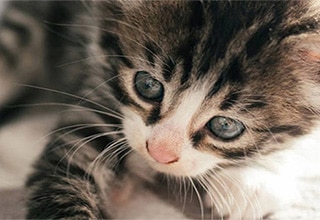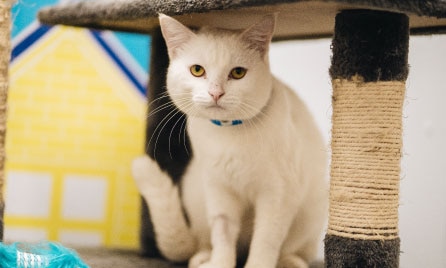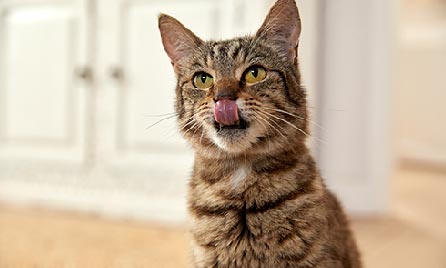- text
-
† Offer available to new Everyday Pet Insurance policyholders, and is limited to 1 membership per eligible policy. The free membership offer (valued at $199p.a) is from the date of your policy commencement, provided your Everyday Pet Insurance policy remains active. You are not eligible to redeem the free membership subscription for cash or credit. VetAssist is a separate subscription based service to the Everyday Pet Insurance product, and is provided independently by Everyday Insurance third party service provider, VetChat Services Pty Ltd (VetChat). Click here for full VetAssist Service terms and conditions. Everyday Insurance reserves the right to vary or remove this offer at any time and will provide reasonable notice of any such changes.
What you need to learn to groom your cat.
From the top of their ears to the tips of their claws, cats are renowned for their clean habits.
But did you know that like dogs, cats require regular grooming to optimise the health of their skin and coat – and help prevent health issues such as digestive problems caused by hairballs?
Getting started is easy. You’ll need just a few basic items, some patience and a relaxed cat. Our guide will help you work out the best grooming plan for your fur baby.
Take time to learn your cat’s particular needs, and your grooming sessions can become an important bonding time – minus the bites and scratches!
Shorthaired cats.
What you need: Fine-toothed flea comb, cat brush, grooming pad (optional), dampened cotton pads
How often: Once a week
Method: Start by gently running the flea comb through your cat’s coat to check for flea dirt. Use a special cat flea treatment if you find evidence of fleas. Use your fingers to gently loosen dead hair by massaging in the direction of the cat’s head. Now use the cat brush, working from the head down. Finally, use the grooming/cotton pad to remove loosened hair.
Longhaired cats.
What you need: Wide-toothed cat comb, cat brush, cotton pads/rubber glove.
How often: Once a day
Method: Massage your cat’s skin by rubbing your fingers against the hair growth from tail to head, checking for flea dirt. Use a special cat flea treatment if you find evidence of fleas. Use the wide-toothed comb to remove any debris. Carefully untangle any knots. Then use the cat brush to brush your cat and gently remove loose hair. Any remaining hairs can be picked up by smoothing your cat’s fur with a dampened cloth or rubber glove.
Grooming tips for all cats.
Ear care.
Check your cat’s ears regularly for wax, debris and infection. Use a damped cloth to gently clean the outside of the ears only. Do not poke inside the ear.
Dental care.
Your cat’s gums should be firm and pink and show no signs of swelling. The teeth should be clean, free of any brownish tartar, and intact.
Bathing.
With regular grooming, and your cat’s fastidious nature, there’s no need to bath your cat. However, if your cat brushes against something sticky or smelly, use a tiny bit of cat shampoo and a soft damp cloth to clean the affected area. Ensure no residue is left on kitty’s skin.
Skin.
If your cat excessively scratches, chews or licks, they may have a skin problem – from external parasites to seasonal allergies or stress.
Shedding.
Shedding is a cat’s natural process of losing dead hair. However, bald patches or significant hair loss may indicate a health problem.
At all times, if you have any concerns about your cat’s health, consult your vet.
Related articles.
- text
-
Everyday Pet Insurance policies entered into for the first time prior to 17 July 2023 and subsequent renewals of those policies are issued by The Hollard Insurance Company Pty Ltd ABN 78 090 584 473, AFSL 241436 (Hollard), arranged and administered by PetSure (Australia) Pty Ltd ABN 95 075 949 923, AFSL 420183 (PetSure) and promoted and distributed by Hollard’s Authorised Representative (AR) Woolworths Group Limited ABN 88 000 014 675, AR 245476 (Woolworths). Everyday Pet Insurance policies entered into for the first time on or after 17 July 2023 and subsequent renewals of those policies are issued by PetSure and promoted and distributed by PetSure’s AR, Woolworths. Any advice provided is general only and does not take into account your individual objectives, financial situation or needs. Please consider the Product Disclosure Statement (PDS) to ensure this product meets your needs before purchasing, or choosing to continue with the product. PDS and Target Market Determination available at insurance.everyday.com.au/pet-insurance.




